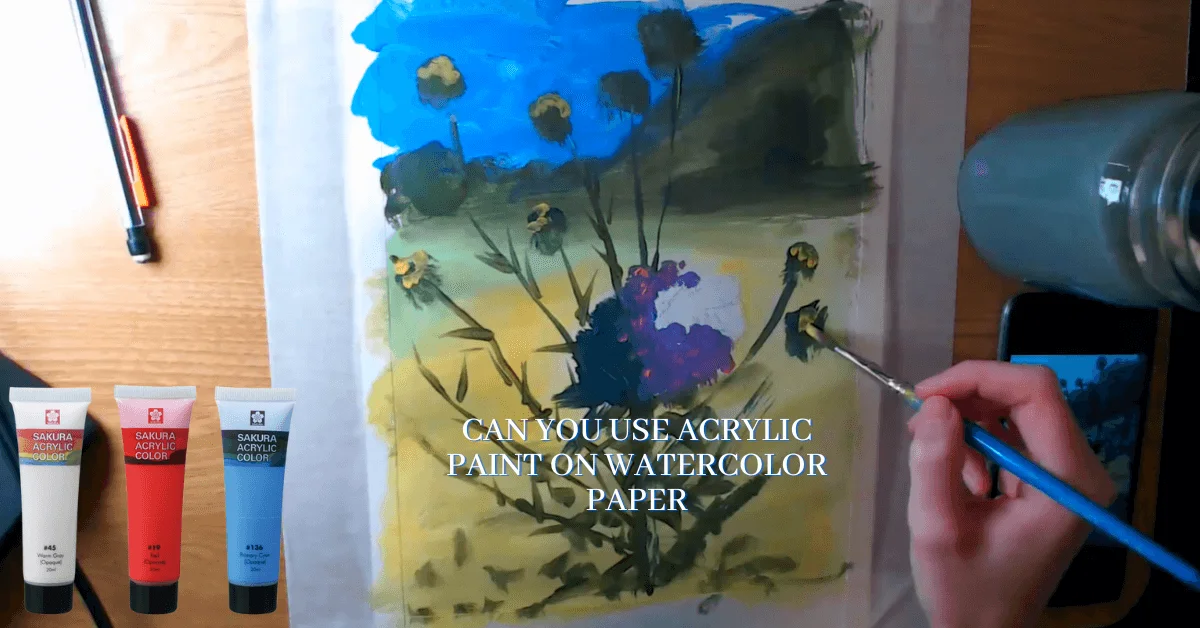Watercolor paper is made of cellulose fibers and is heavier and more durable than usual papers. It can withstand moisture due to its porous nature. Being water-based, can you use acrylic paint on watercolor paper?
Yes, you can but make sure you take into account a few things for painting on watercolor paper. Use heavy-weight paper and thin down the paint for better results. Moreover, prepare the surface carefully and seal the paint finally.
Acrylic paint and watercolour paper may seem like an unlikely pairing, but this combination can create stunning works of art with unique textures and vibrant colors.
At the start of my career, I used to practice painting on paper which made me discover and explore the pros and cons of using acrylic paint on paper.
So keep reading to explore the details and know the best and right way to use acrylic on watercolor paper.
Things To Consider While Painting On Watercolor Paper
Before you proceed with painting on watercolor paper, there are some factors that need to be addressed to get the best outcome. These factors are tips for beginners.
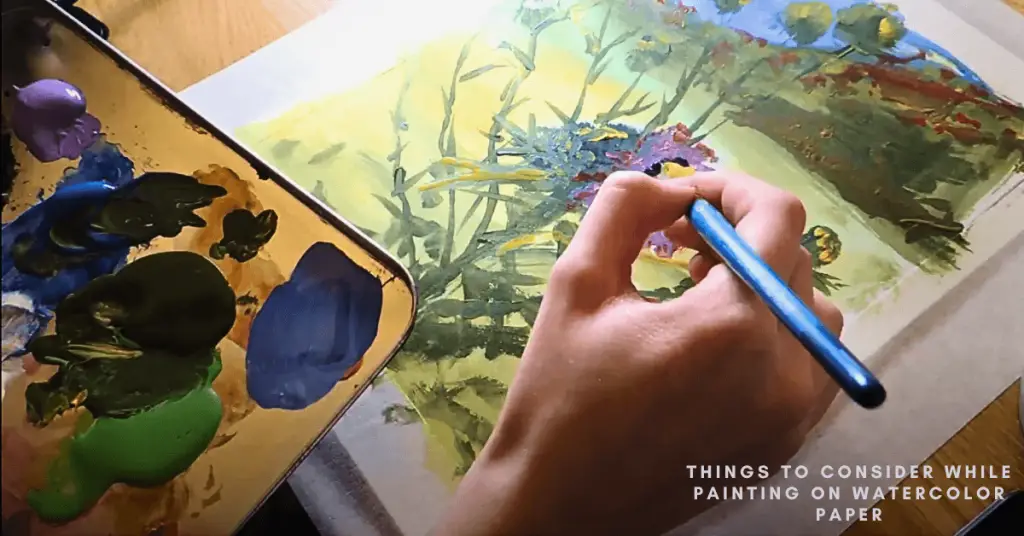
Type of The Paper
You may find different kinds of watercolor paper. Every variety has a specific structure, composition, and application. The following are some types of watercolor paper.
- Hot-pressed paper has a smooth surface, making it ideal for fine details and tight washes. It is usually good with using thin paints and pencil sketching. That is why most sketchbooks use this kind of paper.
- Cold-pressed paper has a slightly rough surface, allowing you more texture and variation in the paint. The colors stick well to this paper due to its roughness.
- Rough paper has a heavily textured surface, making it useful for heavy washes and creating visible texture in the painting.
- Hard-pressed paper is a high-quality paper with a tight, hard surface that allows you a lot of control in painting. It is the best one to be used with heavy layers and paint.
So I suggest you use Hard-Pressed paper for acrylic painting as it will not deform due to the water content and weight of the dye.
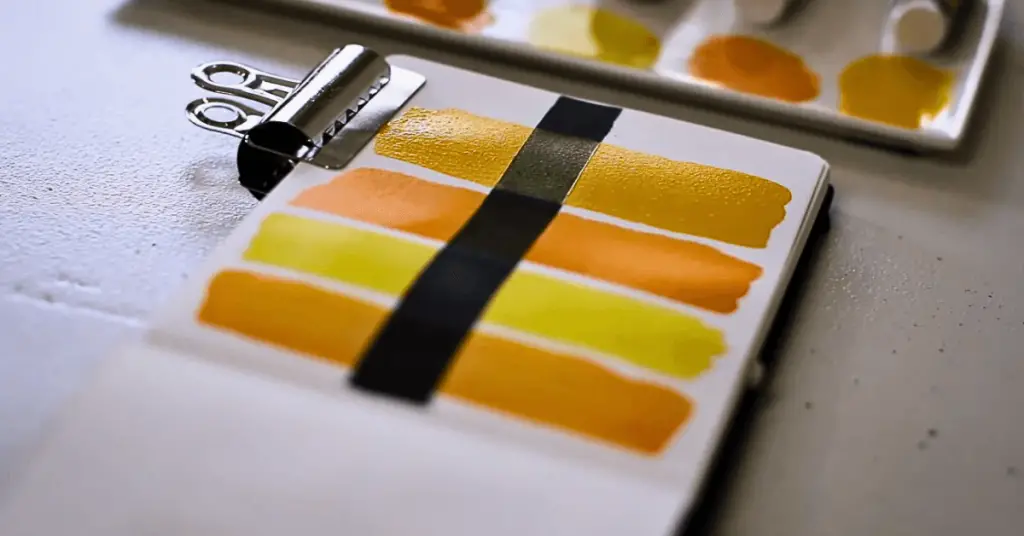
Weight of The Paper
The weight of watercolor paper influences the absorbency and texture of the paper and can impact the final outcome of a painting.
Heavier-weight paper is normally more durable and has a better capacity to handle wet acrylic paint, while the lighter-weight paper may buckle or crinkle easily when it gets moist. Additionally, the texture of the paper can affect the way that paint spreads and dries.
You’ll find watercolor paper in three forms as long as weight is concerned, 90lb, 140lb, and the heavier 300lb. I suggest you use 300lb paper as it can hold acrylic paint and can withstand warping.
Choosing the right weight of paper depends on your personal preferences, painting requirements, and the desired results.
Surface Preparation
Watercolor paper is more delicate and absorbent than traditional canvas, so it needs to be properly prepared before use with acrylic paint. This may include priming the surface with gesso, soaking it in water, and testing it for painting.
The better the preparation, the better the final look. You may skip applying primer if you’re using lightweight paper. But in that case, you have to thin down the paint too much.
Thickness of Acrylic Paint
Acrylic paint is thicker and more viscous than watercolor, so it may require more dilution with water or medium to prevent it from beading up on the surface of the paper. You may use paint thinner as an ideal alternative to water for paint dilution.
Fast Drying Time
Acrylic paint dries much faster than watercolor, so you need to work quickly and avoid overworking the paint, as it can become difficult to blend and manipulate once it has started to dry.
To get you some time for blending, mixing, and painting on the paper, you may use an extender or retarder to increase the dry time.
Lifting and Erasing
Watercolor paper is more prone to damage than canvas, so be careful when lifting or erasing paint, as this can tear or abrade the paper.
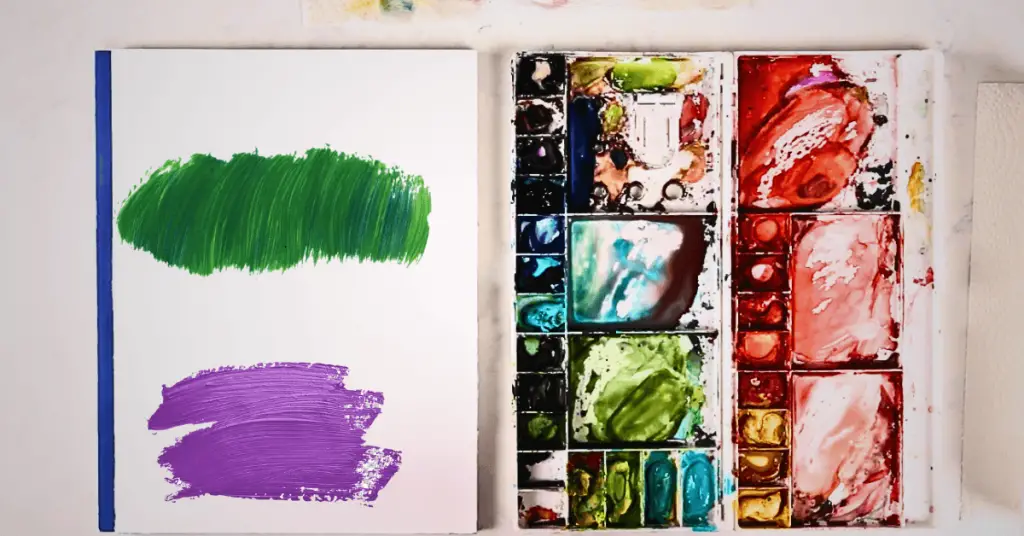
Staining
Acrylic paint can stain the fibers of watercolor paper, making it difficult to paint over or erase. Therefore, it is important to plan your painting carefully and to test the pigments on a scrap piece of paper before using them on your final piece.
Glazing
Because of the absorbent nature of watercolor paper, it can be tough to build up multiple layers of glaze with acrylic paint. So it is necessary to work in thicker layers or to use a medium to slow down the drying time.
How To Use Acrylic Paint On Watercolor Paper? 6 Steps
Here’s a step-by-step guide to painting on watercolor paper using acrylic paint:
Step 1: Collect Materials
You’ll need the following supplies, tools, and substances.
- Watercolor paper
- Acrylic paint
- Paint Brushes
- Clean water
- A palette or mixing tray
- Spray bottle
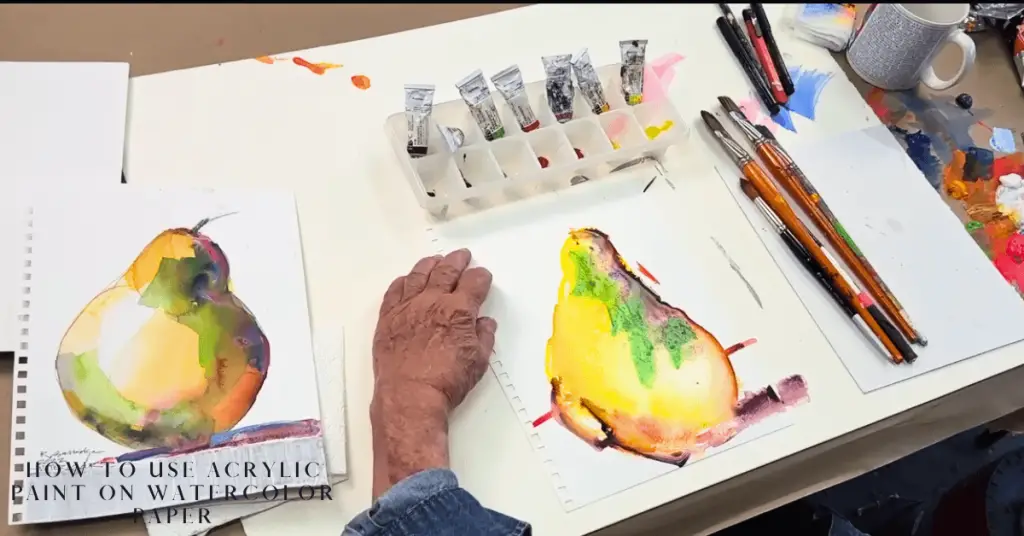
Step 2: Preparing Watercolor Paper For Painting
The most important step is getting your paper ready for painting. Here is how to prepare watercolor paper for acrylic painting.
Soak the paper in water for a few minutes and then stretch it onto a board using tape or gummed paper to prevent it from buckling as it dries.
Apply a thin layer of gesso or acrylic primer to the surface of the paper to seal it and provide a good surface for the acrylic paint to adhere to. Let the gesso or primer dry completely, which may last about an hour.
If you’re using cold-press watercolor paper, use light sanding to rough up the surface to help the paint stick. However, if you’re going for hot-press watercolor paper, it already has a smoother surface, so there’s no need to sand it.
Step 3: Wet Your Paper
Use a spray bottle or a wet brush to moisten the paper lightly. Acrylic paint dries faster on watercolor paper than on canvas, so keeping the paper wet will help you blend acrylic paint and create washes.
If you’re unwilling to dampen the paper, you may dilute the paint with water or use a retarder to enhance dry time.
Step 4: Mix Your Paint
Use your palette or mixing tray to mix the acrylic paint with water to your desired consistency. You can combine different colors to get new shades.
Acrylic paint can be thinned with water to create transparent washes or thicker for opaque coverage. But I don’t suggest using the paint in thick concentration as it gonna make your task harder on the paper.
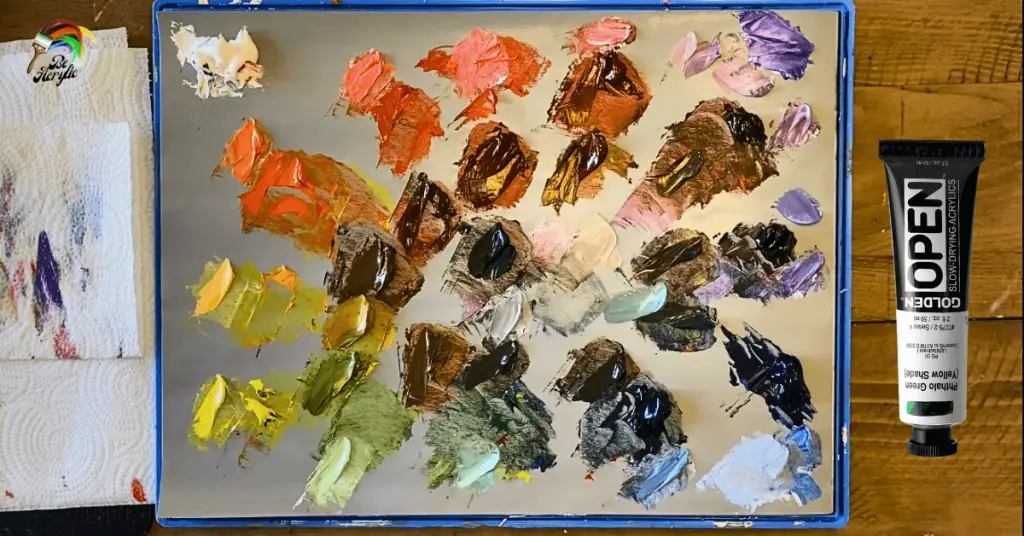
Step 5: Start Painting
You can begin painting with light washes or solid blocks of color. To create washes, load your brush with paint and water, and then lay down a light layer of color. On the other hand, for solid blocks of color, use a dry brush and apply the paint in thicker layers.
As you paint, you can build up multiple coatings of color, allowing each layer to dry before adding another. This technique can help you create depth and texture in your painting.
Watercolor paper has a unique texture and absorbs paint differently than canvas, so feel free to experiment with different brush strokes, color mixtures, and layering techniques.
Step 6: Seal Your Painting
Once you’re done applying the paint, allow it to dry thoroughly. Now you can finally use clear acrylic varnish to seal and protect your painting.
Remember, acrylic painting on watercolor paper takes practice and passion, so be patient and confident and enjoy the journey.
Here is more guidance: Can you use acrylic paint on sketchbook paper?
Can You Use Acrylic Paint On Watercolor Canvas?
Yes, you can use acrylic paint on a watercolor canvas. The watercolor canvas is generally made of a cotton or linen fabric that has been primed with a gesso layer or acrylic primer to set it up for painting.
Acrylic paint can be applied directly to this surface, and it will adhere nicely, although the canvas’s texture may affect the painting’s final appearance.
I recommend you choose a watercolor ground or primer specifically designed for use with acrylic paints to produce a smoother surface.
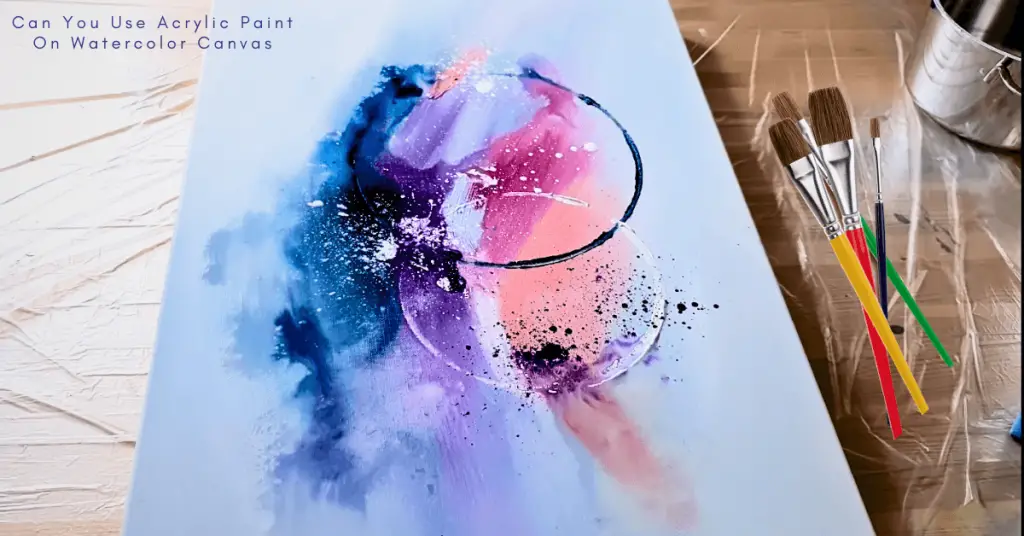
How To Flatten Acrylic Painting On Paper?
In order to get acrylic paint flattened on paper, you can use a palette knife or a flat brush to spread the paint evenly. Additionally, you can use the bottle to mist water over the paint, which can help to flatten it.
However, be careful not to use too much moisture, as it can cause the paper to wrinkle or tear. You can use a heat source like a curing lamp to dry the paint more quickly, which can help to prevent wrinkles and bubbles from forming.
Additionally, you can use a clear gesso primer on the paper before painting to create a soft, even and flat ground for the paint to adhere to.
Final Thoughts
So, can you use acrylic paint on watercolor paper? Well, in conclusion, acrylic paint can be used on watercolor paper, but it’s essential to know that watercolor paper is not specifically designed for use with acrylic media.
However, with proper preparation and the right application, acrylic paint can produce beautiful results on watercolor paper and offer the versatility and permanence of acrylics combined with the unique qualities of the paper.
Thank You For Reading!
FAQs
Can I use watercolor paper for acrylic paint?
Yes, you can put acrylic paint on watercolor paper, but I recommend you take up heavyweight paper for the paint to stay and work quickly because the paint dries fast on paper.
What kind of paper can you use acrylic paint on?
You can use hard-pressed paper with acrylic painting as it is sturdy and doesn’t produce wrinkles due to the moisture of the paint.
What is the difference between watercolour paper and acrylic paper?
The main difference between acrylic and watercolor papers is their concentration of cellulose which affects the absorbency. Moreover, acrylic paper is much more compatible with thick paints as compared to watercolor paper.
Can you paint acrylic on watercolor paper?
Acrylic can be painted on watercolor paper, but there’s a need to learn and be conscious of its quality.
- How To Buff Acrylic Enamel Paint In 5 Easy Steps? Thorough Guidance - February 2, 2024
- How To Make Acrylic Paint More Opaque? 10 Effective Methods - February 1, 2024
- How To Sketch On Canvas Before Acrylic Painting? Draw Like a Pro - January 31, 2024

